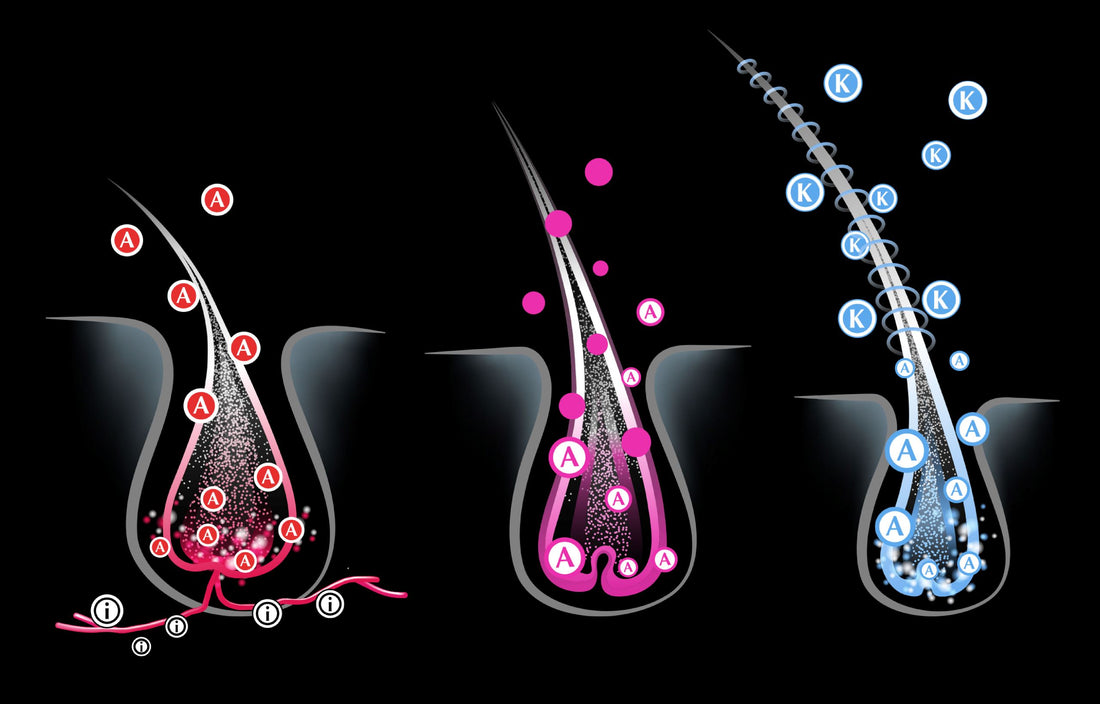Hair generally grows everywhere on the human skin except certain places like the palms of our hands, soles of our feet, eyelids and belly buttons. Many hairs are so fine, however that they are almost invisible to the naked eye.
Hair is made up of a protein called keratin that is produced within hair follicles. As hair follicles produce new hair cells, the old cells are being pushed out through the surface of the skin. The hair you see coming out of you is actually a string of dead keratin cells. The average adult head contains approximately 150,000 hairs and can lose approximate 100-150 hairs daily but finding stray hairs in the shower and your brush is not necessarily cause for alarm.
At any given time, approximately 90% of the hair on a human’s scalp is growing. Each follicle has its own life cycle and is influenced by different factors including age, health, genetics and a wide variety of other factors. The life cycle or hair growth cycle is made up of three different phases:
Anagen Phase – this is the active hair growth cycle. This generally lasts between two and eight years, but sometimes up to ten years. During the anagen phase, your hair follicles are pushing out hairs that will continue to grow until they’re cut or until they reach the end of their lifespan and fall out.
Catagen Phase – this is a transitional phase that generally lasts approximately two to three weeks but in some people can last up to six weeks. During this time a number of things happen. First, an unknown signal causes the hair to end the anagen phase and cease growth. The hair bulb at the bottom of the follicle then detaches from the blood supply and moves upwards. During this time the follicle rapidly shrinks to encourage the upwards push. The dermal papilla then detaches from the follicles base. The follicle will now grasp the shaft and the strand can now be easily shed through normal activity.
Telogen Phase – this is the third phase of the hair’s cycle, occurring after the anagen and catagen phases. It can typically last somewhere between three to five months. During this final stage of the hair growth cycle, the hair will cease to grow any further as it becomes fully keratinized. The dermal papilla is now in the resting phase where it is no longer supplied any nutrition as it is fully grown.
At this point the hair is matured and no longer has access to the blood supply. Instead, the hair bulb is now made of keratin and is now ready to shed so that the anagen phase can start again.

As people age, their rate of hair growth slows. DHT or Dihydrotestosterone is the number one cause of male and female pattern hair loss. DHT in short, causes miniaturization of the follicles. This causes hairs that have gone through the telogen phase and re-entering the anagen phase to come in thinner and finer than previously. Over time, this can cause the follicles to shrink so much that hair cannot grow through the shaft.
More on this in our next blog! Stay tuned!

